The Salamanca tourist guide
I have been preparing this post for a long while now, because my intention was to give you a thorough tourist guidebook to Salamanca, but for that I needed to gather a series of information and take photos that had not been taken yet. So hereby I would like to present to you my current residency, one of the cultural capitals of Europe: Salamanca!
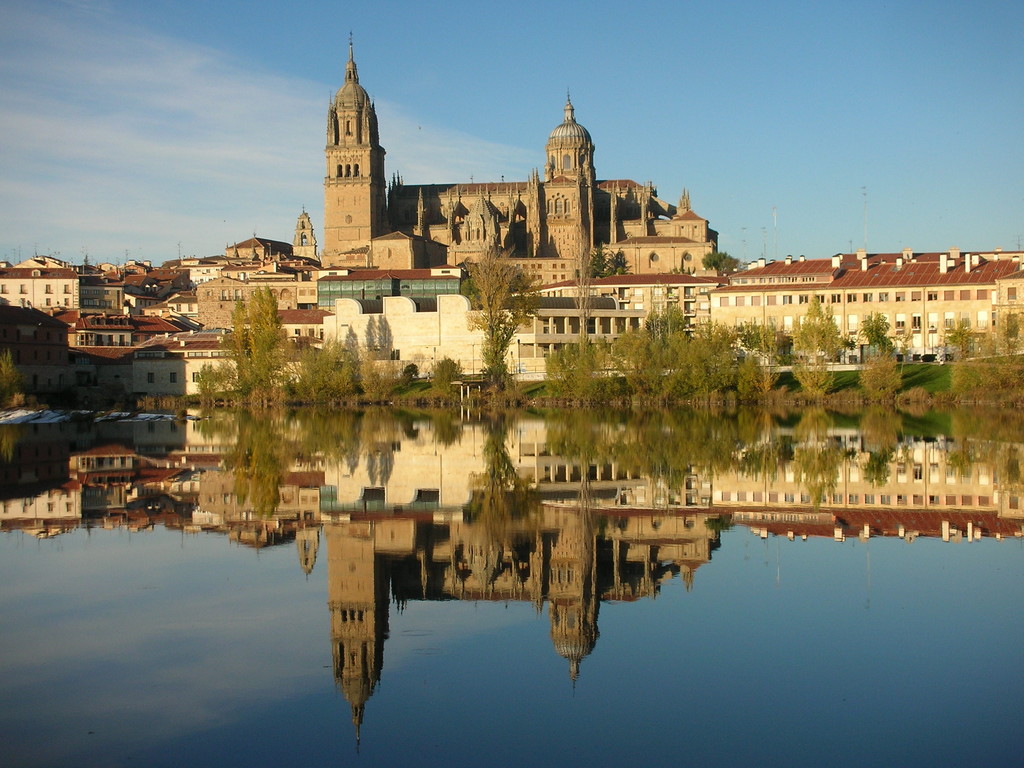
Salamanca is a vibrant university city, located in the autonomous community of Castilla y León and in the province of Salamanca; 200 km from Madrid and very close to the Portuguese border. Thanks to its historical centre, it was declared a World Heritage Site in 1988, and in 2002 the European Capital of Culture. Salamanca is also one of the most popular Renaissance city. Considering its architectural beauty based on sandstone buildings, it has without doubt earned to be called by many as “La Ciudad Dorada”, The Golden City. And if this wouldn’t be enough, Salamanca gives home to the oldest Spanish university and the third oldest in the world. The University of Salamanca – or in its nickname USAL – was founded in 1218 and continues to maintain its excellence ever since. As a consequence, each year the city attracts thousands of students from all around the world to share this inexplicable thirst for knowledge permeating Salamanca and to contribute to the very active nightlife.
And this was just a basic introduction, some of the black and white facts about Salamanca. Let’s fill them with some colour and let the virtual city tour begin!
Plaza Mayor
The Plaza Mayor, built in a Baroque style in the 18th century, is one of the symbols of Salamanca and is, without question, the most beautiful square among all in Spain – also referred to as the Queen of the Spanish main squares. A unique characteristic of the Plaza is that its arches are decorated with carved medallions of the most important figures of Spain.
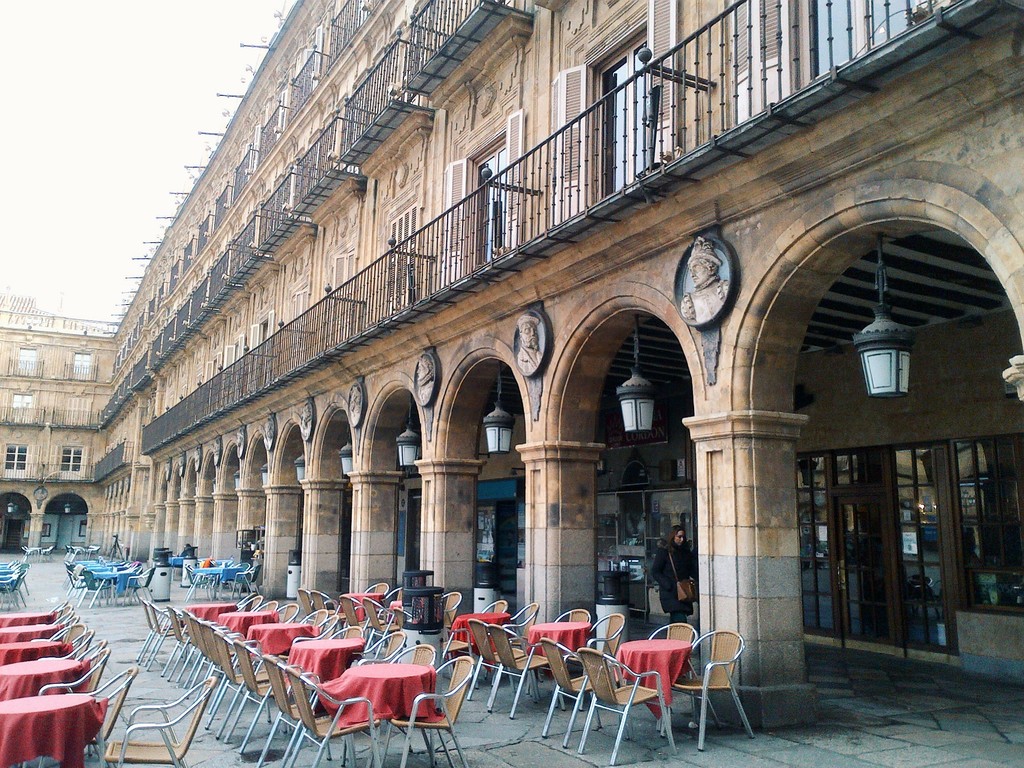
The Plaza is the centre of the Old city, but not solely due to its location. It is also the protagonist of the life of its residents. It serves as a crucial meeting point as it offers numerous different places to sit down and have something to drink or eat, and at the same time, connects 6 walking and shopping streets. The Plaza gets specifically crowded after the siesta period: young and old come together here to socialize. But most importantly, when it comes to partying, that’s when the Plaza is the most alive.

To continue, the Plaza Mayor gives place to one of the most important celebrations is Spain, the so called Nochevieja Universitaria. Originally, Nochevieja would be New Year’s Eve, but in Salamanca a new tradition was born. As I have mentioned above, there are thousands of international students here. However, despite their love towards the city, they usually go back to their homes to celebrate. And this is where Nochevieja Universitaria comes in the picture. The point of this celebration is to give an opportunity to the alumni of USAL to party together a last one before the New Year begins.
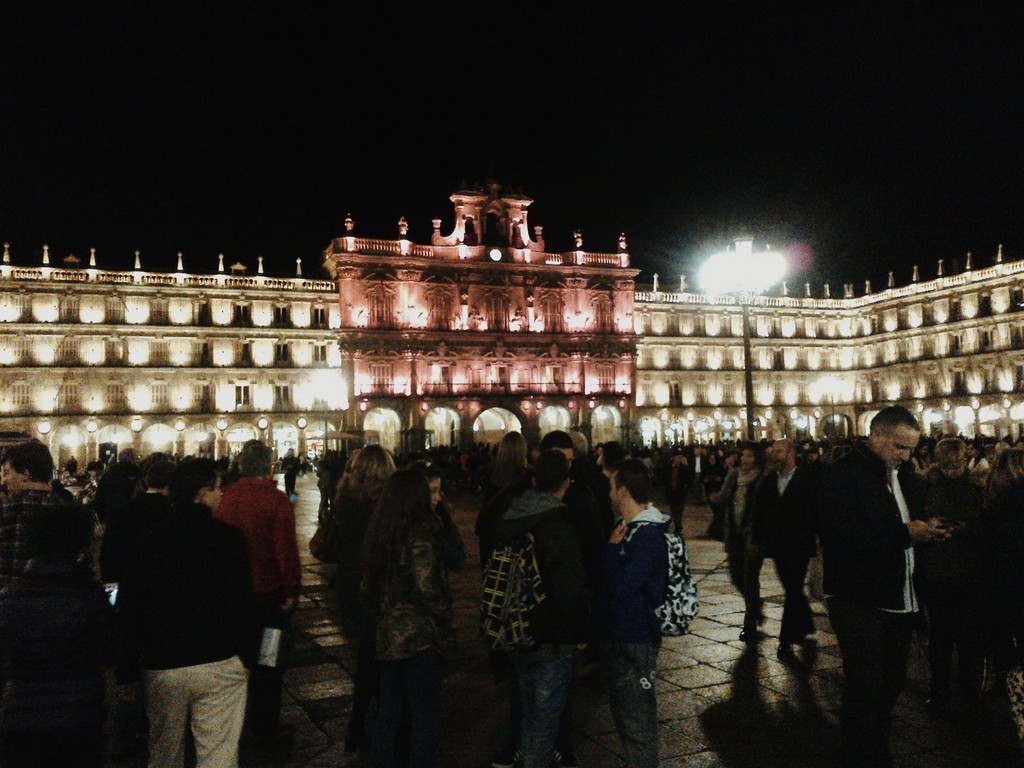
And if you want to know my personal opinion about the Plaza, this is all I have to say: I cross it every single day coming from the language school, yet I get impressed by its beauty over and over again. It is simply a place where it is good to be.
The Cathedral of Salamanca
Our next stop is at the other symbol of Salamanca, a five-minute walk from the Plaza Mayor: the Cathedral. Salamanca interestingly has straight two of them: la Catedral Vieja (old) and la Catedral Nueva (new). The old one was built from the 12th to the 14th century in Romanesque and Gothic style, while the new one from the 16th to the 18th century in Gothic and Baroque style.
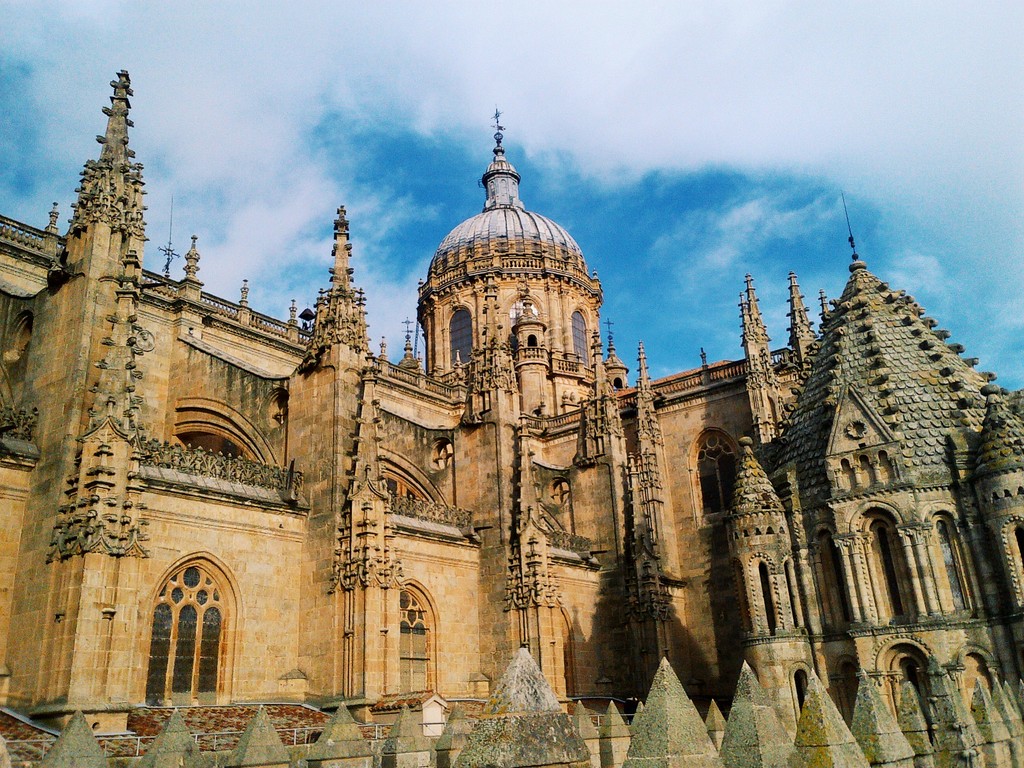
Although the sight of the Cathedral is already amazing, I would suggest you to climb its medieval towers, meanwhile taking a tour in the Ieronimus exhibition. It is definitely worth it, because after checking out the museum’s archives and overcoming the difficulties and claustrophobic fears from the passage of narrow stone stairs, you end up close to the top of the Cathedral with a stunning view of the city. And as an extra, you can do all of these for free on Sundays between 3 and 5 o’clock.
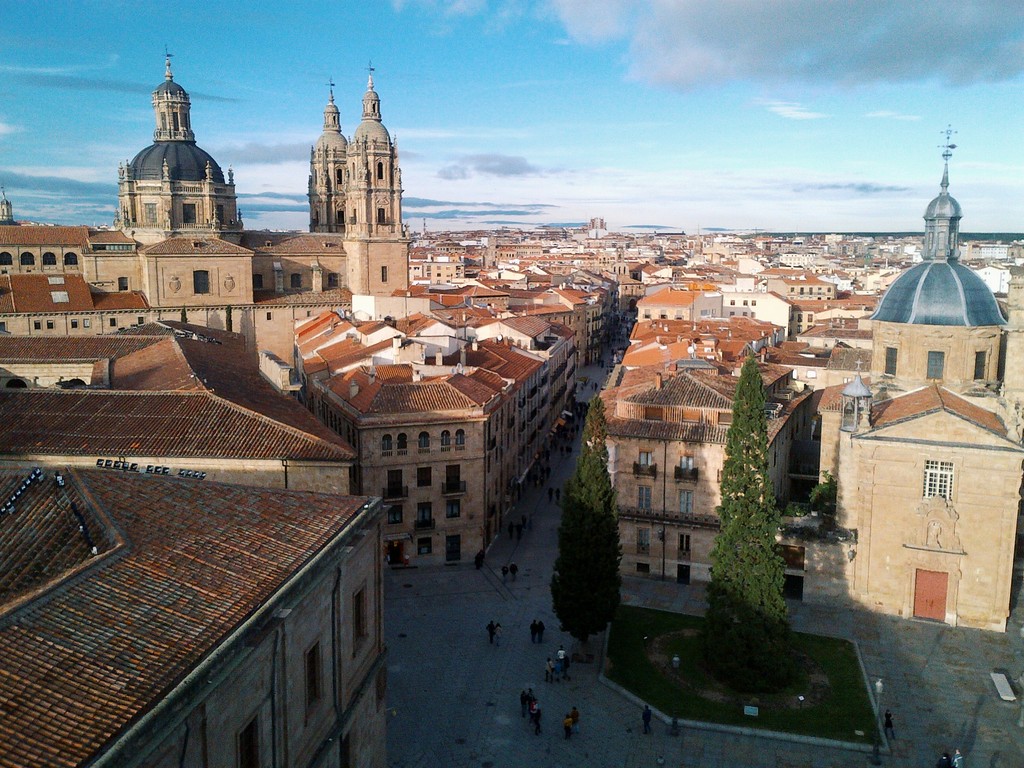
There are two very interesting fun facts about the Cathedral that I think you should know. First, the building got damaged in the Lisbon earthquake in 1755 and there are still visible signs of this tragic event. But what is more, thanks to the fact that the Cathedral survived and as a dedication to God, a member of the Mariquelo family climbs one of the towers every single year. The other interesting thing is that there is an astronaut carved in the facade of the Cathedral and no one really knows how it got there as the construction works were finished in the 18th century. Probably it will always remain a conundrum, but as a possible explanation, my brother came up with the idea that it might not be an astronaut but a scuba driver, with the equipment typical of that time. Well, who knows?
And finally, I would like to demonstrate how symbolic the Cathedral is for the people of Salamanca with my dearest example: after a long drive on the highway from Madrid, getting closer and closer to the city, the first thing that you spot in the middle of nothing – still from quite a distance – is the vague outline of the Cathedral. As a way to show them that they have arrived. Home.

The University Quarter
As Salamanca is the most famous for its university and education, no wonder that campuses can be found all over the city. At present, there are two universities in Salamanca: the aforementioned USAL, which is a public university, and the private and catholic University Pontificia. However, the main attraction is probably the old university building, located again in the central area of Salamanca. On one hand because you can admire the very first university library in Europe, with thousands of volumes. As a lover of books, it is quite a shame that I have not seen it yet, but it is definitely on my list. The other reason why it is worth visiting the old building is to be a part of the most challenging ritual of the students of Salamanca. On the facade of the building, there is a small frog hidden. It is basically impossible to spot it without help. But the ritual holds that in case you are able to discover it, you will succeed in your studies. As for me, I found it, but as I have said it, only with some previous instructions. Also, it is not a disadvantage if you happen to have good eyes. Furthermore, in front of the building, you find the statue of Fray Luis de León, a Spanish poet.
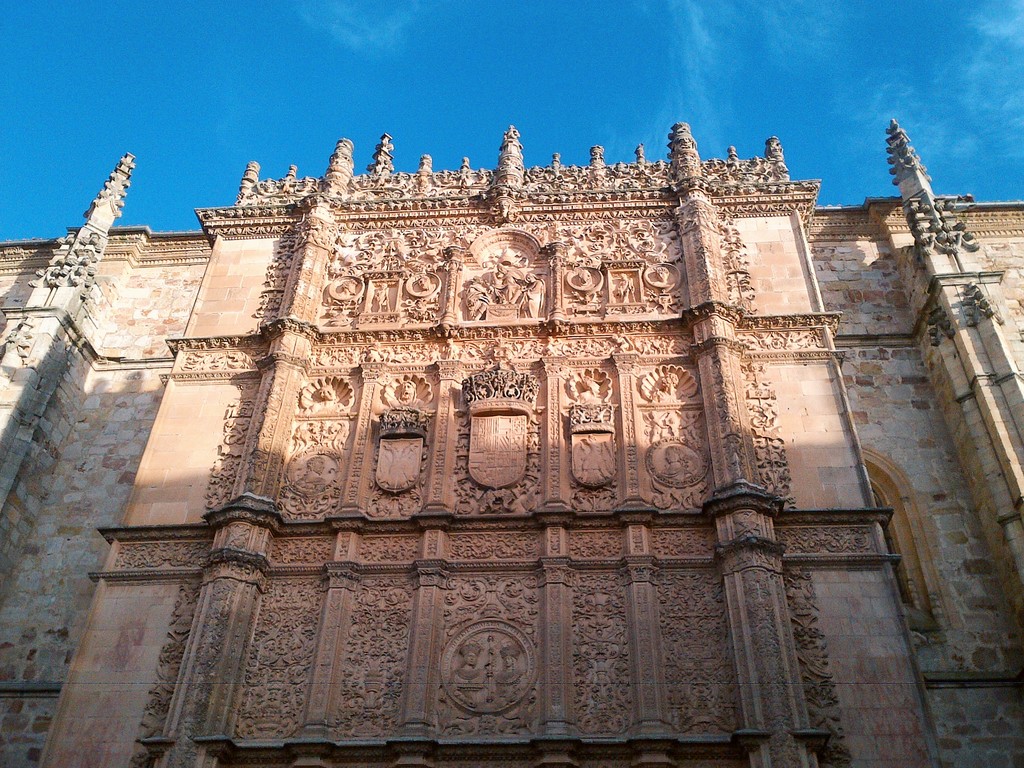
The shore of Tormes
If you want to relax a bit and have a stroll in Salamanca, the shoreline of the river, the Tormes, is definitely your best choice. Walking through the Roman Bridge, which is 176 meter long, you can enjoy a stunning view of the Cathedral and it also connects you with another part of the city. It is a perfect place to take a quiet moment for yourself, have a deep conversation with someone or practice sports. It is also very interesting that at the end of the bridge – the one which is on the side of the Old City – you can find a statue resembling a lot to a pig. However, it was made such a long time ago that in reality no one really knows if it actually is a pig. Rumour has it that it was made by the Celts.
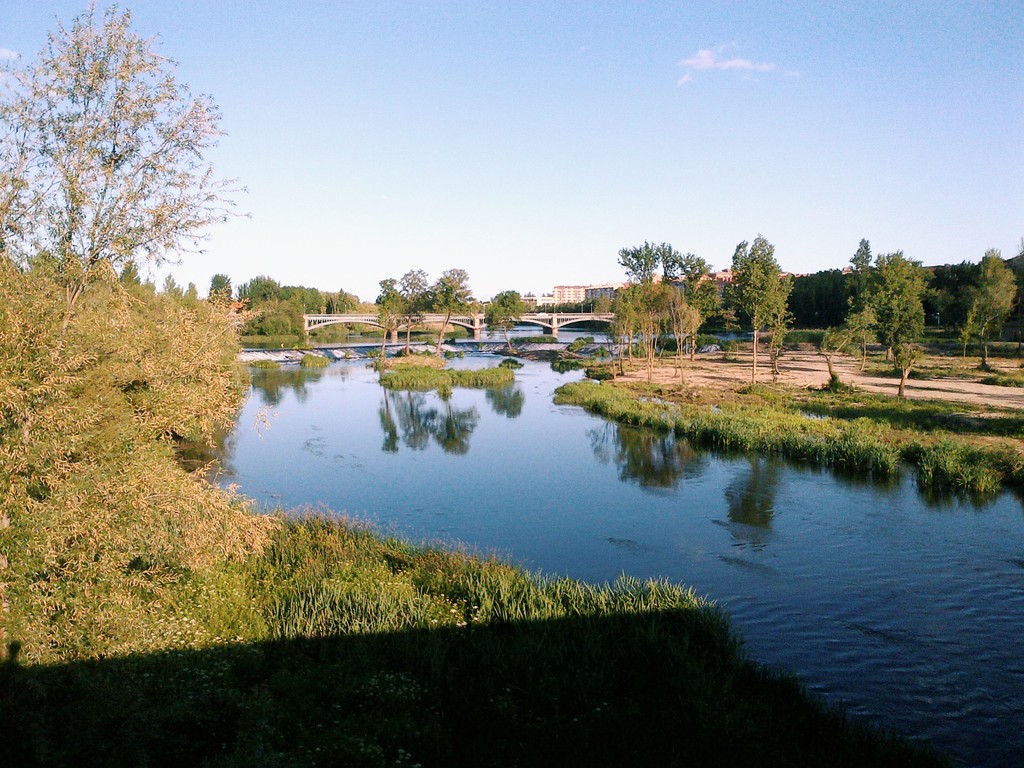
Casa de las Conchas
Continuing with the important and symbolic buildings of Salamanca, we arrive to our next destination: the House of Shells, built in the 15th century, in a Gothic style. But the reason for its popularity is its decoration. The facade of the building is ornamented with more than a hundred shells. Currently, the house gives place to a public library. Additionally, right on the opposite side of Casa de las Conchas, you find the private university of Salamanca: Universidad Pontificia.
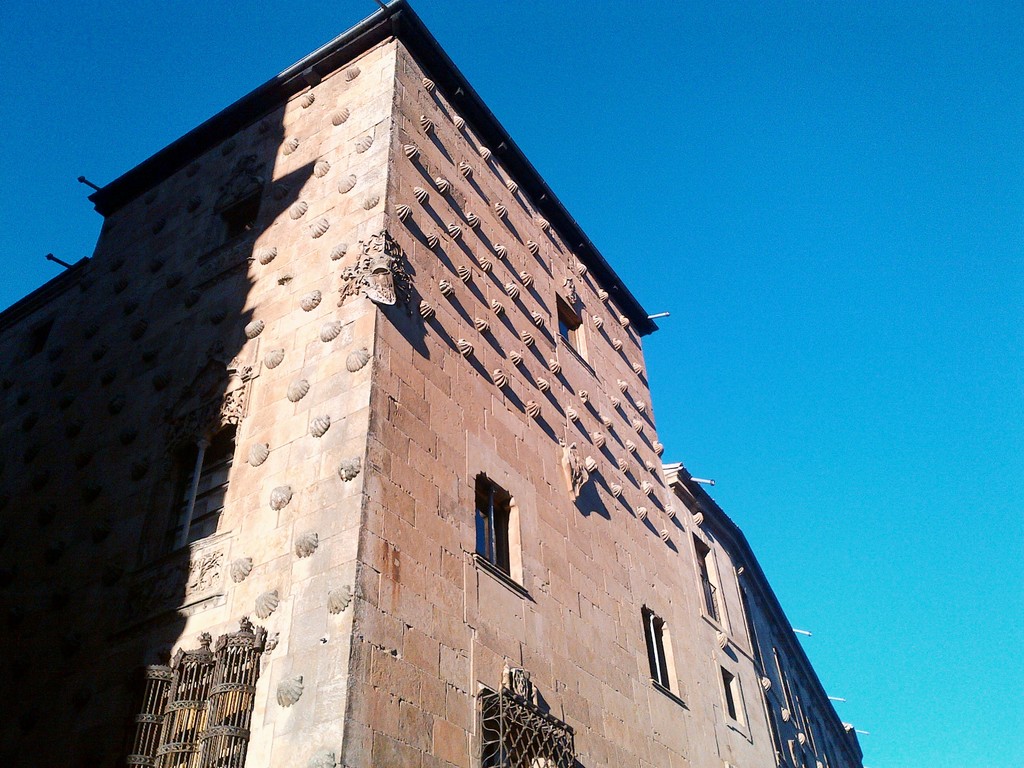
Gran Vía
After taking this tour around the city, I also suggest you to drive or walk along the Gran Vía, which is the main street of Salamanca with many important buildings and again with an impressive architecture. And finishing off, you can enter any of the cross streets to do some shopping or have a tapas.
Writings on the walls
Finally, I would like to devote some words to one my favourite things of Salamanca. If you come to visit the city, you will notice very quickly that many places within the old area are indicated with red medieval writings. I really like this little detail of the city as I believe it is absolutely creative and unique. You would be surprised to see the variety of places these walls and writings are hiding.

In case you decide to travel to Salamanca, any additional information can be acquired in the Municipial Tourist Office. Here, you can rent an audio guide for 12 Euros or join the official tourist guide. Or you can also discover this charming city by yourself with the Salamanca card that gives you discount to a lot of places.
Here is the official website of Salamanca: http://www.salamanca.es/en/
I hope I could make this city such an attractive destination for you as it is for myself.
Photo gallery
Content available in other languages
- Polski: Przewodnik po Salamance
- Português: Guia turístico de Salamanca
- Français: Le guide touristique de Salamanca
- Español: La guía turística de Salamanca
- Türkçe: Salamanca'nın Turist Rehberi
- Italiano: Guida turistica di Salamanca
Want to have your own Erasmus blog?
If you are experiencing living abroad, you're an avid traveller or want to promote the city where you live... create your own blog and share your adventures!
I want to create my Erasmus blog! →


























Comments (0 comments)